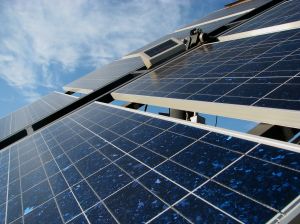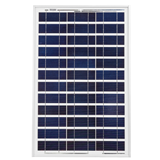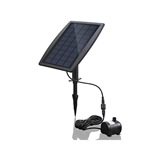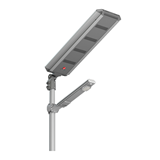Researchers from Swinburne University of Technology and CSIRO, led by Professor Min Gu Director of Swinburne's Centre for Micro-Photonics, will use the funding to take NanoPlas - the patented thin film solar cell technology developed at the Victoria-Suntech Advanced Solar Facility - from the laboratory to a small scale pilot project.
The NanoPlas solar cell works by incorporating a thin layer of metallic nanoparticles into conventional thin film solar cells to effectively scatter light into the cells. This increases the amount of light entering the cells, improving the conversion of light into electricity. The SIEF grant will enable the integration of the NanoPlas solar technology with a thermal management system for cooling of the cells.
"One of the critical challenges the thin film solar cell faces is low energy conversion efficiency due to the insufficient absorption from the very thin silicon layer," Professor Gu said.
"The new funding will allow us to address this issue."
Professor Gu said the NanoPlas technology addresses the biggest challenge of thin film solar cells: the cost-effectiveness, making building integratable solar cells a more viable technology for the building sector.
Integrating solar cells with buildings is an attractive concept for the building industry because it potentially allows skyscrapers to self-power themselves with purely green solar energy.
"We believe the NanoPlas technology can make a difference to Australian solar manufacturers through further research and development to scale up the technology. It could enable skyscrapers to be powered entirely by sunlight, transforming our cities," Professor Gu said.
According to Professor Gu, the NanoPlas thin film technology can be directly integrated into building glass like a tint layer converting normal windows into solar cells. The technology also has the potential to make solar energy more competitive in the household electricity supply market.
CSIRO fluid dynamics expert Dr Yonggang Zhu said the novel thermal management system will significantly improve the cells' performance in warm climates, including much of Australia.
"It will maximise the solar energy harnessed by the cells while recycling the waste heat energy," he said.
"This system will be easily integrated with the solar cells, but could also be used for different applications, such as cooling for currently available solar cells and organic solar cells."
This research is supported by the Science and Industry Endowment Fund (RP04-024 Solar Cells), which provides grants to science and scientists to assist Australian industry, further the interests of the Australian community and contribute to the achievement of Australian national objectives.












